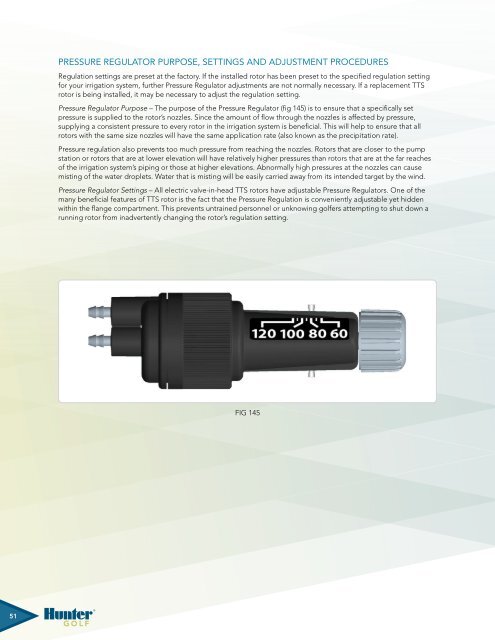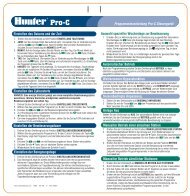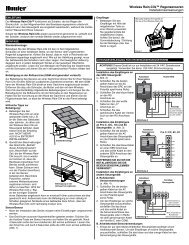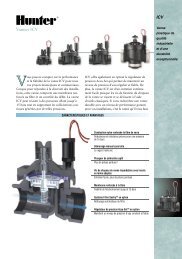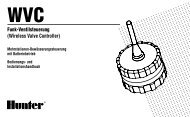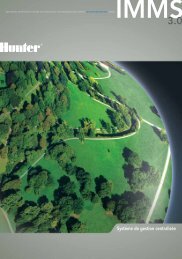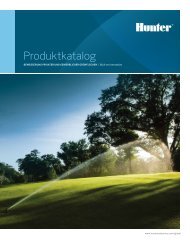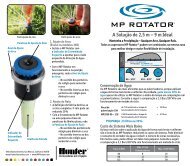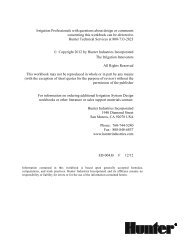TTS Golf RoToR oWNERS MANUAl - Hunter Industries
TTS Golf RoToR oWNERS MANUAl - Hunter Industries
TTS Golf RoToR oWNERS MANUAl - Hunter Industries
You also want an ePaper? Increase the reach of your titles
YUMPU automatically turns print PDFs into web optimized ePapers that Google loves.
Pressure Regulator Purpose, Settings and Adjustment ProceduresRegulation settings are preset at the factory. If the installed rotor has been preset to the specified regulation settingfor your irrigation system, further Pressure Regulator adjustments are not normally necessary. If a replacement <strong>TTS</strong>rotor is being installed, it may be necessary to adjust the regulation setting.Pressure Regulator Purpose – The purpose of the Pressure Regulator (fig 145) is to ensure that a specifically setpressure is supplied to the rotor’s nozzles. Since the amount of flow through the nozzles is affected by pressure,supplying a consistent pressure to every rotor in the irrigation system is beneficial. This will help to ensure that allrotors with the same size nozzles will have the same application rate (also known as the precipitation rate).Pressure regulation also prevents too much pressure from reaching the nozzles. Rotors that are closer to the pumpstation or rotors that are at lower elevation will have relatively higher pressures than rotors that are at the far reachesof the irrigation system’s piping or those at higher elevations. Abnormally high pressures at the nozzles can causemisting of the water droplets. Water that is misting will be easily carried away from its intended target by the wind.Pressure Regulator Settings – All electric valve-in-head <strong>TTS</strong> rotors have adjustable Pressure Regulators. One of themany beneficial features of <strong>TTS</strong> rotor is the fact that the Pressure Regulation is conveniently adjustable yet hiddenwithin the flange compartment. This prevents untrained personnel or unknowing golfers attempting to shut down arunning rotor from inadvertently changing the rotor’s regulation setting.Fig Fig 14514451


